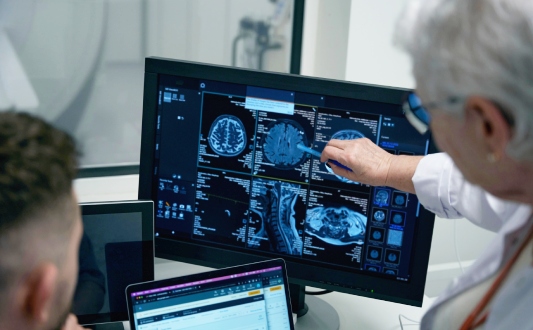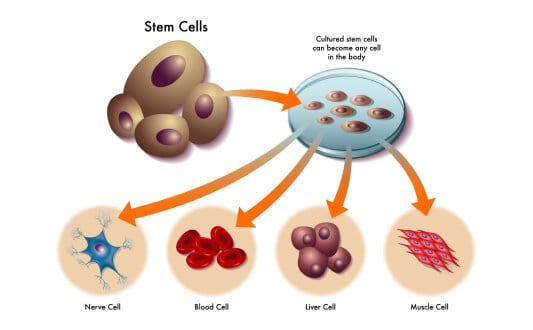Medical Blog About Treatment Abroad
Welcome to our medical blog – it is dedicated to empowering patients with knowledge about global healthcare! We created this platform with the intention to bridge the gap between patients and the medical innovations available globally.
What's Inside: Discover new and rare methods in oncology, immunology, heart surgery, neurosurgery, and other medical fields! Our health travel insights show how medical journeys open new possibilities with advanced treatments unavailable locally, including specialized cancer care abroad.
Who Benefits: This resource is for patients and their families who seek new treatment methods and explore options at leading international hospitals. Those who want to make informed healthcare decisions beyond borders.
Why Read: Booking Health experts provide verified information through patient-friendly articles – they translate complex medical advances into accessible info. Stay current with the latest developments in global healthcare and discover how international medicine can transform treatment outcomes!
Browse our latest articles and take the first step toward better health outcomes!
Treatment
 New Effective Treatments for Stage 4 Cancer: Innovations in Oncology
New Effective Treatments for Stage 4 Cancer: Innovations in Oncology
According to official statistics from the WHO in 2022, oncological diseases are now the cause of one in every six deaths worldwide. This has encouraged the international medical community to develop new advanced cancer treatment methods and increase the effectiveness of the already existing ones. This is particularly important for...
 Lutetium‑177 PSMA Therapy for Prostate Cancer
Lutetium‑177 PSMA Therapy for Prostate Cancer
Prostate cancer ranks as one of the most widespread cancer types in men across the globe and continues to be a major reason for cancer-related deaths. The Global Cancer Observatory (GLOBOCAN) reports that doctors diagnosed over 1.4 million new cases of prostate cancer in 2020, making it the second most common cancer in men after...
 Treatment Methods and Advanced Therapies for Liver Metastases
Treatment Methods and Advanced Therapies for Liver Metastases
The liver is the body's laboratory – it filters blood and performs hundreds of vital functions. Unfortunately, this makes it vulnerable to cancer cells: they travel through the bloodstream from the primary tumor and settle there, forming secondary liver cancer called hepatic metastases. According to the results of large-scale studies, colorectal...
 Dendritic Cell Therapy for Colon Cancer Treatment in Germany
Dendritic Cell Therapy for Colon Cancer Treatment in Germany
Dendritic cell therapy is a form of cancer immunotherapy that utilizes the body's own immune system to fight cancer cells. It is considered a promising approach for patients with various cancers, including colon cancer. Regarding the latter, it is unfortunate, but this disease is one of the most prevalent malignancies worldwide. According to the 2020...
 Brain Cancer Treatment – Full Guide: All New Brain Cancer Treatment Options
Brain Cancer Treatment – Full Guide: All New Brain Cancer Treatment Options
Brain cancer refers to a range of tumors originating in the brain. As the evidence suggests, the most aggressive and prevalent malignant form in adults is glioblastoma multiforme (GBM). In fact, recent data reports that this tumor accounts for ~14% of all primary brain tumors. When taking a look at global statistics, the incidence of...
 Cancer Treatment in Germany
Cancer Treatment in Germany
One or two decades ago, a cancer diagnosis was almost equated to death. Nowadays, due to the fast development of healthcare, numerous oncological diseases can be cured. Nevertheless, cancer burden is still high in Europe. The European Cancer Information System (ECIS) states that in 2022, around 4.1 million new cases of cancer...
 Innovative Treatment for Glioblastoma in Germany: Dendritic Cell Therapy for Cancer
Innovative Treatment for Glioblastoma in Germany: Dendritic Cell Therapy for Cancer
Standard therapy for glioblastoma is the combination of surgical removal of the tumor, chemotherapy / radiation therapy. Average life expectancy after diagnosis with standard treatment of glioblastoma is 15-17 months, and the 5-year survival rate does not exceed 5-10%. Supplementing the standard protocol with the dendritic...
 A Comprehensive Guide to Stem Cell Therapy
A Comprehensive Guide to Stem Cell Therapy
The fast-growing stem cell biology has turned modern medicine upside down, providing new ways of thinking about how to cure the previously considered incurable diseases. The special property of stem cells to promote tissue regeneration and convert to different types of tissues has provided the basis for new stem cell-based solutions...

